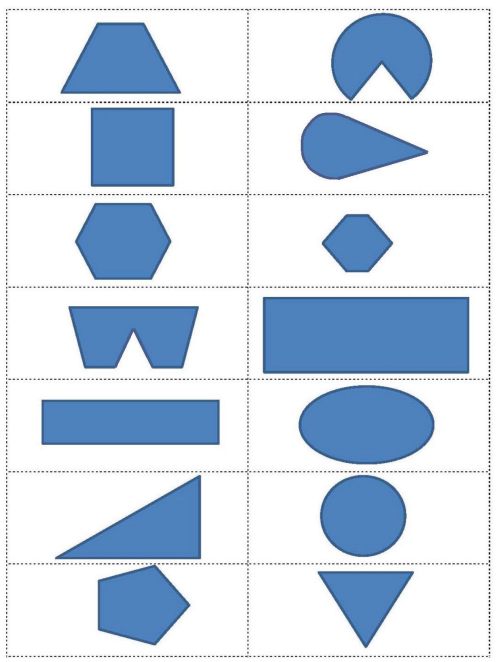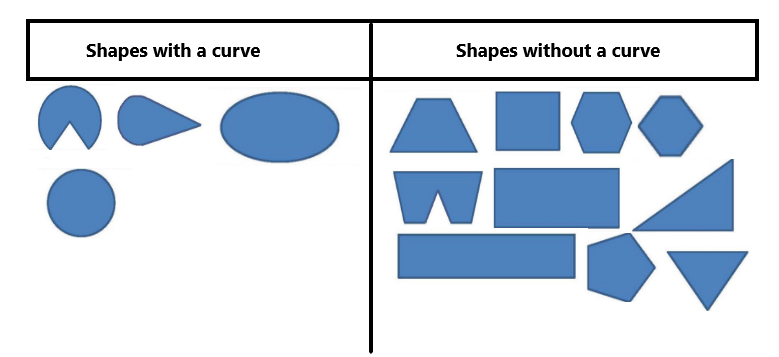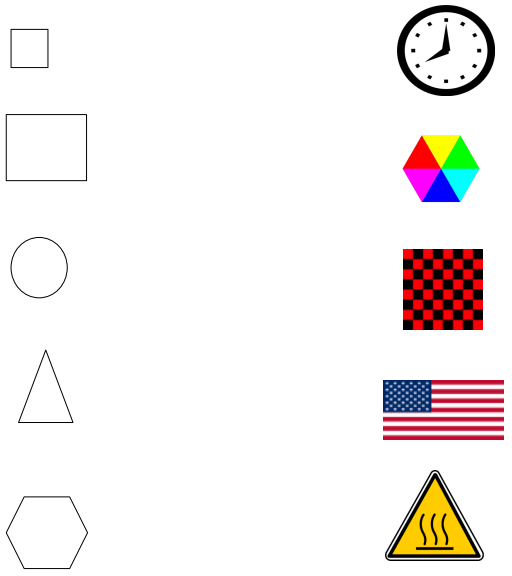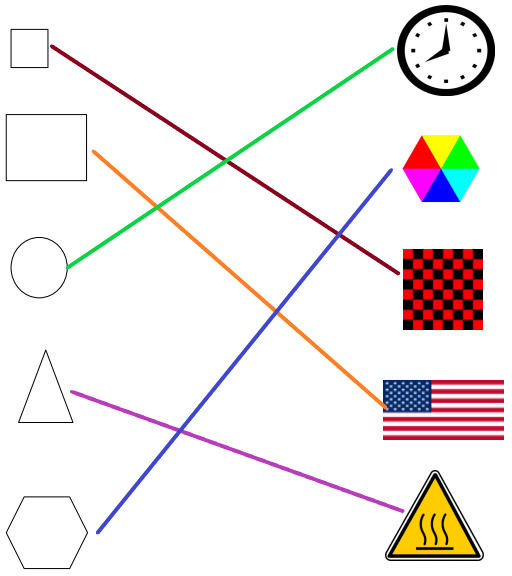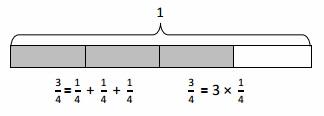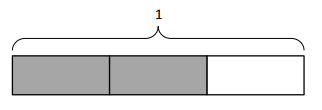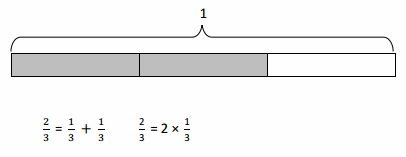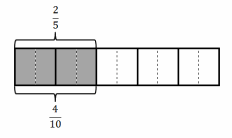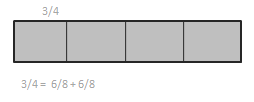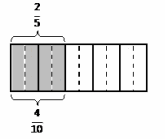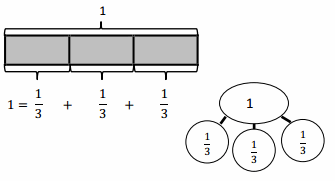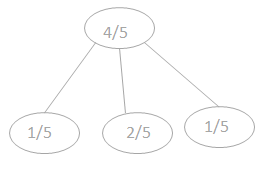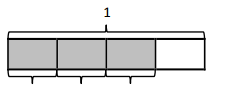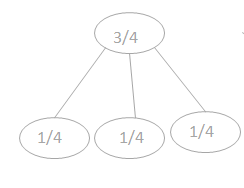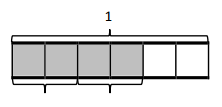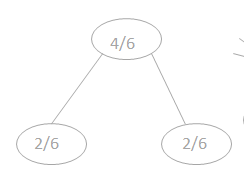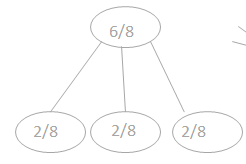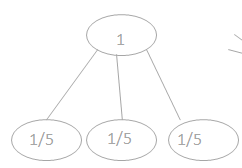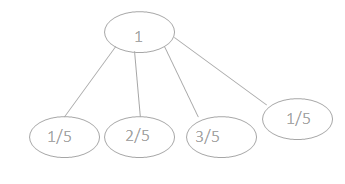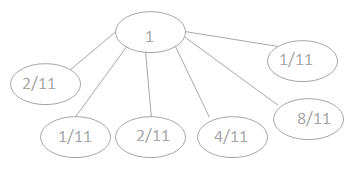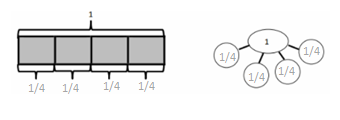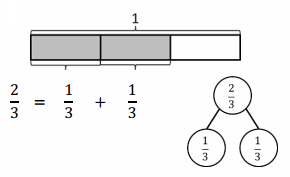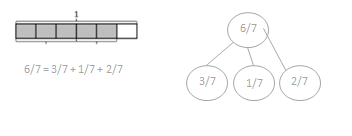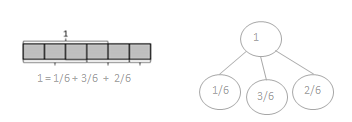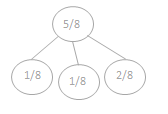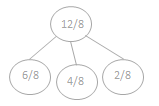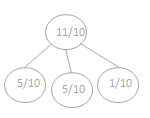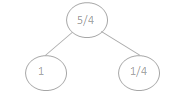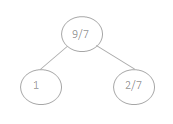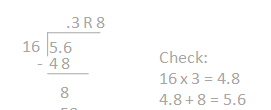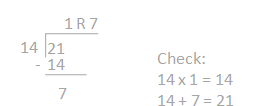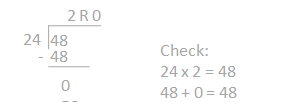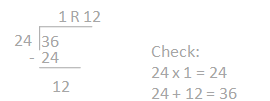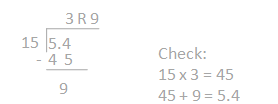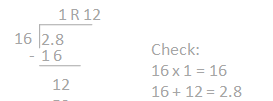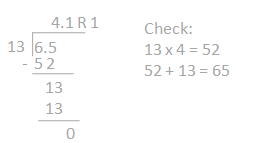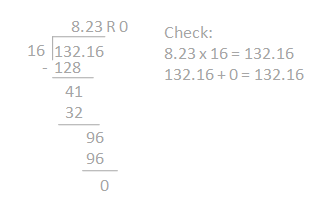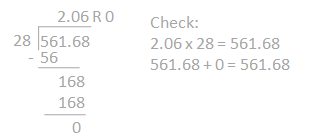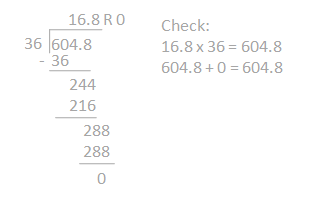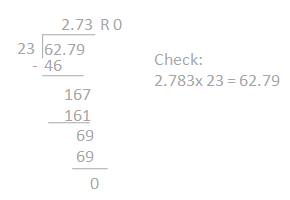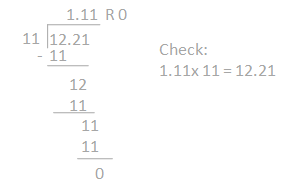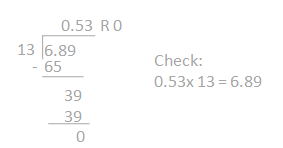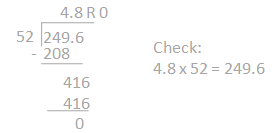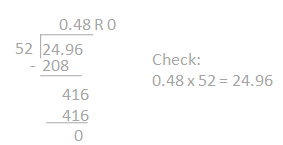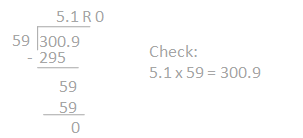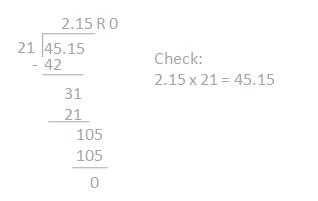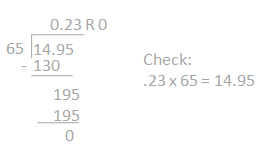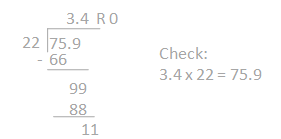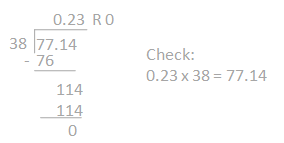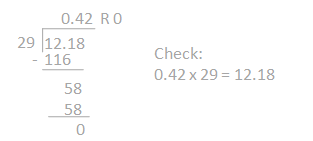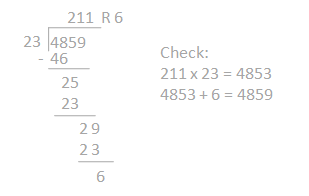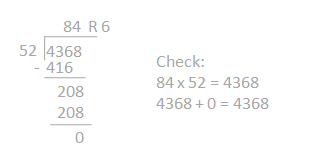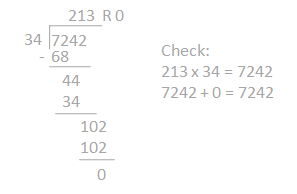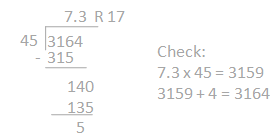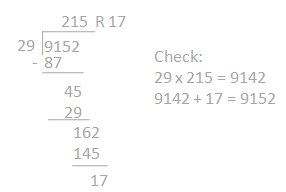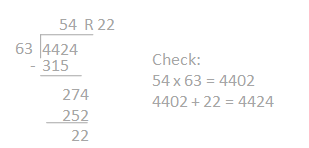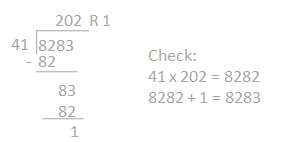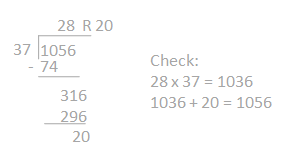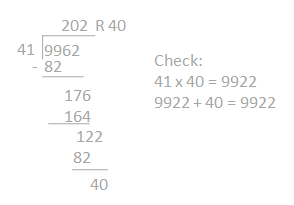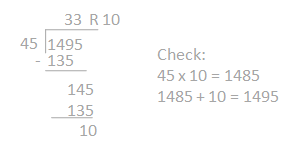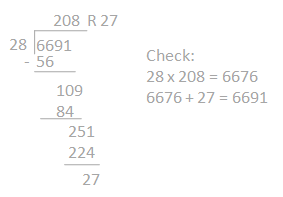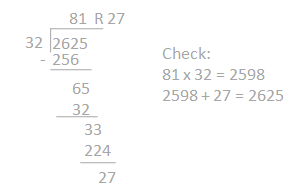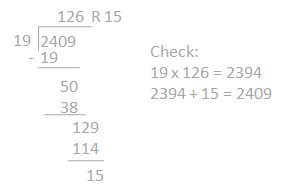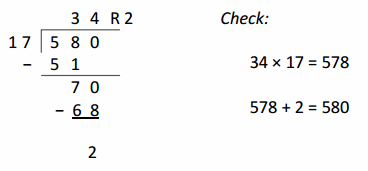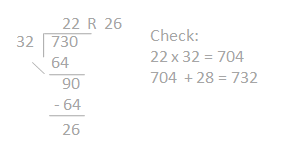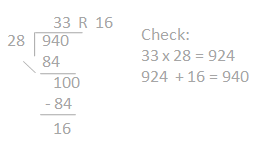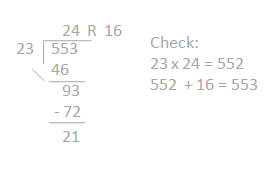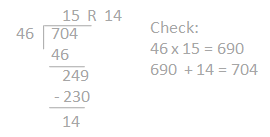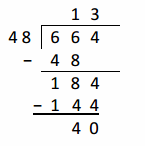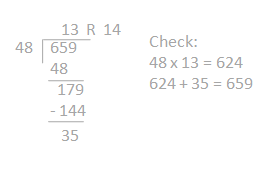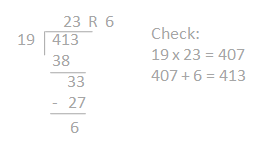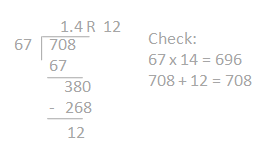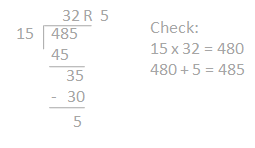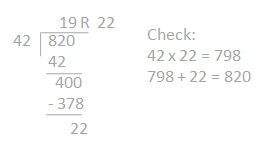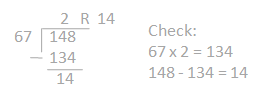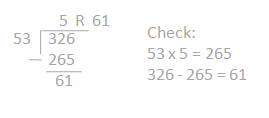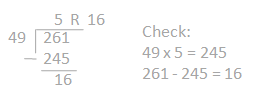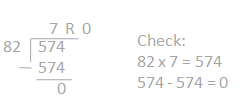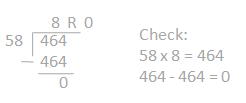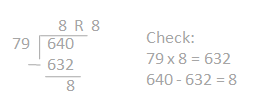Engage NY Eureka Math 5th Grade Module 2 Lesson 28 Answer Key
Eureka Math Grade 5 Module 2 Lesson 28 Sprint Answer Key
A
Divide Decimals by Multiples of 10

Answer:
6/10 = 0.6, 6/20 = 0.3, 6/60 = 0.1, 8/10 = 0.8, 8/40 = 0.2, 8/20 = 0.4, 4/10 = 0.4, 4/20 = 0.2, 4/40 = 0.1, 9/3 = 3, 9/30 = 0.3, 12/3 = 4, 12/30 = 0.4, 12/40 = 0.3, 12/60 = 0.2, 12/20 = 0.6, 15/3 = 5, 15/30 = 0.5, 15/50 = 0.3, 15/50 = 0.3, 18/30 = 0.6, 24/30 = 0.8, 16/40 = 0.4.
Explanation:
In the above-given question,
given that,
divide decimals by multiples of 10.
6/10 = 0.6, 6/20 = 0.3, 6/60 = 0.1, 8/10 = 0.8, 8/40 = 0.2, 8/20 = 0.4, 4/10 = 0.4, 4/20 = 0.2, 4/40 = 0.1, 9/3 = 3, 9/30 = 0.3, 12/3 = 4, 12/30 = 0.4, 12/40 = 0.3, 12/60 = 0.2, 12/20 = 0.6, 15/3 = 5, 15/30 = 0.5, 15/50 = 0.3, 15/50 = 0.3, 18/30 = 0.6, 24/30 = 0.8, 16/40 = 0.4.
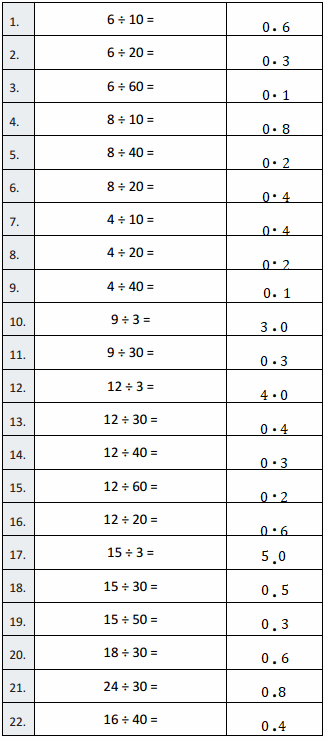
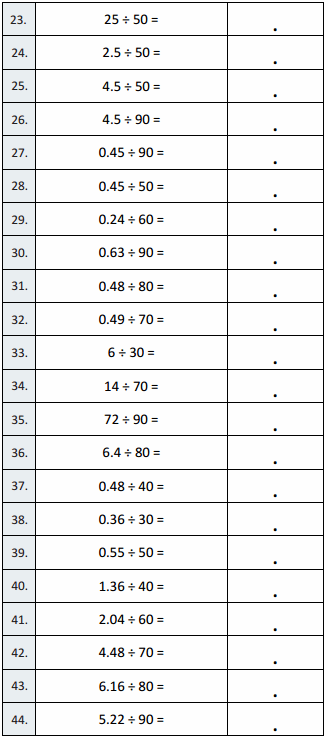
Answer:
25/50 = 0.5, 2.5/50 = 0.05, 4.5/50 = 0.09, 4.5/90 = 0.05, 0.45/90 = 0.005, 0.45/50 = 0.009, 0.24/60 = 0.004, 0.63/90 = 0.007, 0.48/80 = 0.006, 0.49/70 = 0.007, 6/30 = 0.2, 14/70 = 0.2, 72/90 = 0.8, 6.4/80 = 0.08, 0.48/40 = 0.012, 0.36/30 = 0.012, 0.55/50 = 0.011, 1.36/30 = 0.045, 2.04/60 = 0.034, 4.48/70 = 0.064, 6.16/80 = 0.077, 5.22/90 = 0.058.
Explanation:
In the above-given question,
given that,
divide decimals by multiples of 10.
25/50 = 0.5, 2.5/50 = 0.05, 4.5/50 = 0.09, 4.5/90 = 0.05, 0.45/90 = 0.005, 0.45/50 = 0.009, 0.24/60 = 0.004, 0.63/90 = 0.007, 0.48/80 = 0.006, 0.49/70 = 0.007, 6/30 = 0.2, 14/70 = 0.2, 72/90 = 0.8, 6.4/80 = 0.08, 0.48/40 = 0.012, 0.36/30 = 0.012, 0.55/50 = 0.011, 1.36/30 = 0.045, 2.04/60 = 0.034, 4.48/70 = 0.064, 6.16/80 = 0.077, 5.22/90 = 0.058.
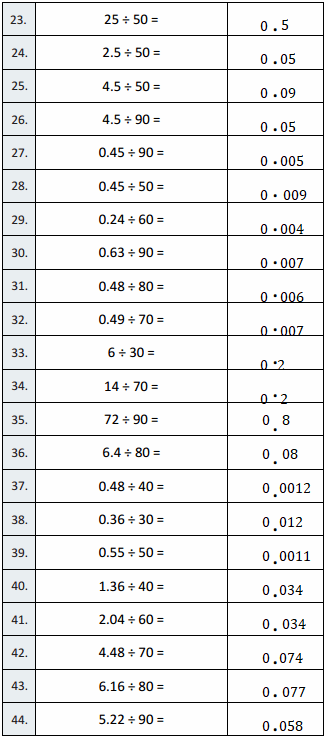
Question 1.
6 ÷ 10 = 0.6
Answer:
6/10 = 0.6.
Explanation:
In the above-given question,
given that,
divide decimals by multiples of 10.
6/10 = 0.6.
Question 2.
6 ÷ 20 = 0.3
Answer:
6/20 = 0.3.
Explanation:
In the above-given question,
given that,
divide decimals by multiples of 20.
6/20 = 0.3.
Question 3.
6 ÷ 60 = 0.1
Answer:
6/60 = 0.1.
Explanation:
In the above-given question,
given that,
divide decimals by multiples of 60.
6/60 = 0.1.
Question 4.
8 ÷ 10 = 0.8
Answer:
8/10 = 0.8.
Explanation:
In the above-given question,
given that,
divide decimals by multiples of 10.
8/10 = 0.8.
Question 5.
8 ÷ 40 = 0.2
Answer:
8/40 = 0.2.
Explanation:
In the above-given question,
given that,
divide decimals by multiples of 40.
8/40 = 0.2.
Question 6.
8 ÷ 20 = 0.4
Answer:
8/20 = 0.4.
Explanation:
In the above-given question,
given that,
divide decimals by multiples of 20.
8/20 = 0.4.
Question 7.
4 ÷ 10 = 0.4
Answer:
4/10 = 0.4.
Explanation:
In the above-given question,
given that,
divide decimals by multiples of 10.
4/10 = 0.4.
Question 8.
4 ÷ 20 = 0.2
Answer:
4/20 = 0.2.
Explanation:
In the above-given question,
given that,
divide decimals by multiples of 20.
4/20 = 0.2.
Question 9.
4 ÷ 40 = 0.1
Answer:
4/40 = 0.1.
Explanation:
In the above-given question,
given that,
divide decimals by multiples of 40.
4/40 = 0.1.
Question 10.
9 ÷ 3 = 3
Answer:
9/3 = 3.
Explanation:
In the above-given question,
given that,
divide decimals by multiples of 3.
9/3 = 3.
Question 11.
9 ÷ 30 = 0.3
Answer:
9/30 = 0.3.
Explanation:
In the above-given question,
given that,
divide decimals by multiples of 30.
9/30 = 0.3.
Question 12.
12 ÷ 3 = 4.
Answer:
12/3 = 4.
Explanation:
In the above-given question,
given that,
divide decimals by multiples of 3.
12/3 = 4.
Question 13.
12 ÷ 30 = 0.4
Answer:
12/30 = 0.4.
Explanation:
In the above-given question,
given that,
divide decimals by multiples of 30.
12/30 = 0.4.
Question 14.
12 ÷ 40 = 0.3.
Answer:
12/40 = 0.3.
Explanation:
In the above-given question,
given that,
divide decimals by multiples of 40.
12/40 = 0.3.
Question 15.
12 ÷ 60 = 0.2.
Answer:
12/60 = 0.2.
Explanation:
In the above-given question,
given that,
divide decimals by multiples of 60.
12/60 = 0.2.
Question 16.
12 ÷ 20 = 0.6
Answer:
12/20 = 0.6.
Explanation:
In the above-given question,
given that,
divide decimals by multiples of 20.
12/20 = 0.6.
Question 17.
15 ÷ 3 = 5
Answer:
15/3 = 5.
Explanation:
In the above-given question,
given that,
divide decimals by multiples of 3.
15/3 = 5.
Question 18.
15 ÷ 30 = 0.5.
Answer:
15/30 = 0.5.
Explanation:
In the above-given question,
given that,
divide decimals by multiples of 30.
15/30 = 0.5.
Question 19.
15 ÷ 50 = 0.3
Answer:
15/50 = 0.3.
Explanation:
In the above-given question,
given that,
divide decimals by multiples of 50.
15/50 = 0.3.
Question 20.
18 ÷ 30 = 0.6
Answer:
18/30 = 0.6.
Explanation:
In the above-given question,
given that,
divide decimals by multiples of 30.
18/30 = 0.6.
Question 21.
24 ÷ 30 = 0.8
Answer:
24/30 = 0.8.
Explanation:
In the above-given question,
given that,
divide decimals by multiples of 30.
24/30 = 0.8.
Question 22.
16 ÷ 40 = 0.4.
Answer:
16/40 = 0.4.
Explanation:
In the above-given question,
given that,
divide decimals by multiples of 40.
16/40 = 0.4.
Question 23.
25 ÷ 50 = 0.5
Answer:
25/50 = 0.5.
Explanation:
In the above-given question,
given that,
divide decimals by multiples of 50.
25/50 = 0.5.
Question 24.
2.5 ÷ 50 = 0.05
Answer:
2.5/50 = 0.05.
Explanation:
In the above-given question,
given that,
divide decimals by multiples of 50.
2.5/50 = 0.05.
Question 25.
4.5 ÷ 50 = 0.09
Answer:
4.5/50 = 0.09.
Explanation:
In the above-given question,
given that,
divide decimals by multiples of 50.
4.5/50 = 0.09.
Question 26.
4.5 ÷ 90 = 0.05
Answer:
4.5/90 = 0.05.
Explanation:
In the above-given question,
given that,
divide decimals by multiples of 90.
4.5/90 = 0.05.
Question 27.
0.45 ÷ 90 = 0.005
Answer:
0.45/90 = 0.005.
Explanation:
In the above-given question,
given that,
divide decimals by multiples of 90.
0.45/90 = 0.005.
Question 28.
0.45 ÷ 50 = 0.009
Answer:
0.45/50 = 0.009.
Explanation:
In the above-given question,
given that,
divide decimals by multiples of 50.
0.45/50 = 0.009.
Question 29.
0.24 ÷ 60 = 0.006
Answer:
0.24/60 = 0.006.
Explanation:
In the above-given question,
given that,
divide decimals by multiples of 60.
0.24/60 = 0.006.
Question 30.
0.63 ÷ 90 = 0.007
Answer:
0.63/90 = 0.007.
Explanation:
In the above-given question,
given that,
divide decimals by multiples of 90.
0.63/90 = 0.007.
Question 31.
0.48 ÷ 80 = 0.006.
Answer:
0.48/80 = 0.006.
Explanation:
In the above-given question,
given that,
divide decimals by multiples of 80.
0.48/80 = 48/100/80.
48/100 = 0.48.
0.48/80 = 0.006.
Question 32.
0.49 ÷ 70 = 0.007.
Answer:
0.49/70 = 0.007.
Explanation:
In the above-given question,
given that,
divide decimals by multiples of 70.
0.49/70 = 49/100/70.
49/100 = 0.49.
0.49/70 = 0.007.
Question 33.
6 ÷ 30 = 0.2.
Answer:
6/30 = 0.2.
Explanation:
In the above-given question,
given that,
divide decimals by multiples of 80.
6/30 = 6/30.
6/30 = 0.2.
Question 34.
14 ÷ 70 = 0.2.
Answer:
14/70 = 0.2.
Explanation:
In the above-given question,
given that,
divide decimals by multiples of 70.
14/70 = 14/70.
14/70 = 0.2.
Question 35.
72 ÷ 90 = 0.8.
Answer:
72/90 = 0.8.
Explanation:
In the above-given question,
given that,
divide decimals by multiples of 90.
72/90 = 72/90.
72/90 = 0.8.
Question 36.
6.4 ÷ 80 = 0.08.
Answer:
6.4/80 = 0.08.
Explanation:
In the above-given question,
given that,
divide decimals by multiples of 80.
6.4/80 = 640/10/80.
640/10 = 64.
64/80 = 0.008.
Question 37.
0.48 ÷ 40 = 0.012
Answer:
0.48/40 = 0.012.
Explanation:
In the above-given question,
given that,
divide decimals by multiples of 40.
0.48/40 = 48/100/40.
48/100 = 0.48.
0.48/40 = 0.012.
Question 38.
0.36 ÷ 30 = 0.012.
Answer:
0.36/30 = 0.012.
Explanation:
In the above-given question,
given that,
divide decimals by multiples of 30.
0.36/30 = 36/100/30.
36/100 = 0.36.
0.36/30 = 0.012.
Question 39.
0.55 ÷ 50 = 0.011.
Answer:
0.55/50 = 0.011.
Explanation:
In the above-given question,
given that,
divide decimals by multiples of 50.
0.55/50 = 55/100/50.
55/100 = 0.55.
0.55/50 = 0.011.
Question 40.
1.36 ÷ 40 = 0.034.
Answer:
1.36/40 = 0.034.
Explanation:
In the above-given question,
given that,
divide decimals by multiples of 40.
1.36/40 = 136/100/40.
136/100 = 1.36.
1.36/40 = 0.034.
Question 41.
2.04 ÷ 60 = 0.034.
Answer:
2.04/60 = 0.034.
Explanation:
In the above-given question,
given that,
divide decimals by multiples of 60.
2.04/60 = 204/100/40.
204/100 = 2.04.
2.04/60 = 0.034.
Question 42.
4.48 ÷ 70 = 6.4.
Answer:
4.48/70 = 6.4.
Explanation:
In the above-given question,
given that,
divide decimals by multiples of 70.
4.48/70 = 448/70/70.
448/70 = 4.48.
4.48/70 = 6.4.
Question 43.
6.16 ÷ 80 = 0.077.
Answer:
6.16/80 = 0.077.
Explanation:
In the above-given question,
given that,
divide decimals by multiples of 80.
6.16/80 = 616/100/80.
616/100 = 6.16.
6.16/80 = 0.077.
Question 44.
5.22 ÷ 90 = 0.058.
Answer:
5.22/90 = 0.058.
Explanation:
In the above-given question,
given that,
divide decimals by multiples of 90.
5.22/90 = 522/100/90.
522/100 = 5.22.
5.22/40 = 0.058.
B
Divide Decimals by Multiples of 10
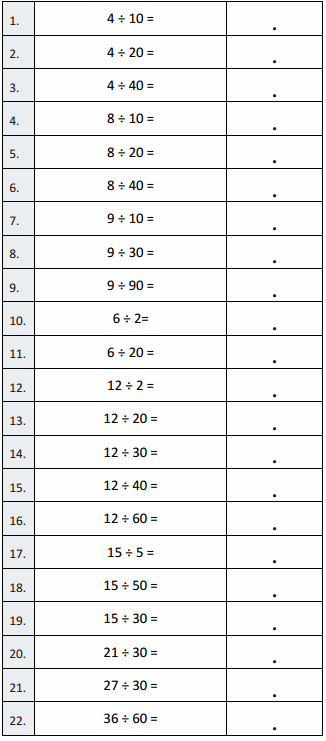
Answer:
4/10 = 0.4, 4/20 = 0.2, 4/40 = 0.1, 8/10 = 0.8, 8/20 = 0.4, 8/40 = 0.2, 9/10 = 0.9, 9/30 = 0.3, 9/90 = 0.1, 6/2 = 3, 6/20 = 0.3, 12/2 = 6, 12/20 = 0.6, 12/30 = 0.4, 12/40 = 0.3, 12/60 = 0.2, 15/5 = 3, 15/50 = 0.3, 15/30 = 0.5, 21/30 = 0.7, 27/30 = 0.9, 36/60 = 0.6.
Explanation:
In the above-given question,
given that,
divide decimals by multiples of 10.
4/10 = 0.4, 4/20 = 0.2, 4/40 = 0.1, 8/10 = 0.8, 8/20 = 0.4, 8/40 = 0.2, 9/10 = 0.9, 9/30 = 0.3, 9/90 = 0.1, 6/2 = 3, 6/20 = 0.3, 12/2 = 6, 12/20 = 0.6, 12/30 = 0.4, 12/40 = 0.3, 12/60 = 0.2, 15/5 = 3, 15/50 = 0.3, 15/30 = 0.5, 21/30 = 0.7, 27/30 = 0.9, 36/60 = 0.6.
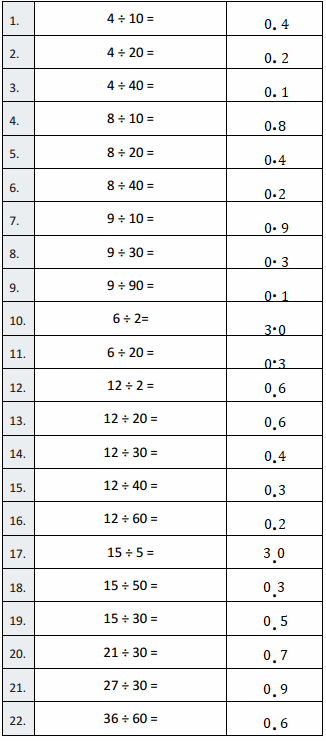
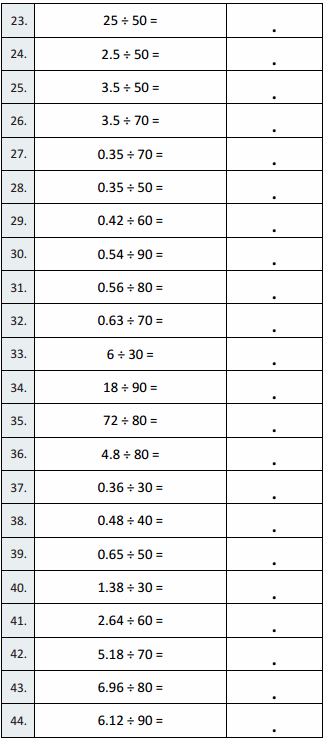
Answer:
25/50 = 0.5, 2.5/50 = 0.05, 3.5/50 = 0.07, 3.5/70 = 0.05, 0.35/70 = 0.005, 0.35/50 = 0.007, 0.42/60 = 0.007, 0.54/90 = 0.006, 0.56/80 = 0.007, 0.63/70 = 0.009, 6/30 = 0.2, 18/90 = 0.2, 72/80 = 0.9, 4.8/80 = 0.06, 0.36/30 = 0.012, 0.48/40 = 0.012, 0.65/50 = 0.013, 1.38/30 = 0.046, 2.64/60 = 0.044, 5.18/70 = 0.074, 6.96/80 = 0.087, 6.12/90 = 0.068.
Explanation:
In the above-given question,
given that,
divide decimals by multiples of 10.
25/50 = 0.5, 2.5/50 = 0.05, 3.5/50 = 0.07, 3.5/70 = 0.05, 0.35/70 = 0.005, 0.35/50 = 0.007, 0.42/60 = 0.007, 0.54/90 = 0.006, 0.56/80 = 0.007, 0.63/70 = 0.009, 6/30 = 0.2, 18/90 = 0.2, 72/80 = 0.9, 4.8/80 = 0.06, 0.36/30 = 0.012, 0.48/40 = 0.012, 0.65/50 = 0.013, 1.38/30 = 0.046, 2.64/60 = 0.044, 5.18/70 = 0.074, 6.96/80 = 0.087, 6.12/90 = 0.068.
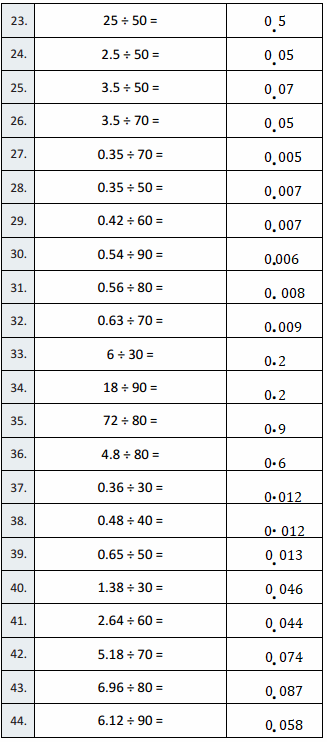
Question 1.
4 ÷ 10 = 0.4.
Answer:
4/10 = 0.4.
Explanation:
In the above-given question,
given that,
divide decimals by multiples of 10.
4/10 = 0.4.
Question 2.
4 ÷ 20 = 0.2.
Answer:
4/20 = 0.2.
Explanation:
In the above-given question,
given that,
divide decimals by multiples of 20.
4/20 = 0.2.
Question 3.
4 ÷ 40 = 0.1.
Answer:
4/40 = 0.1.
Explanation:
In the above-given question,
given that,
divide decimals by multiples of 40.
4/40 = 0.1.
Question 4.
8 ÷ 10 = 0.8.
Answer:
8/10 = 0.8.
Explanation:
In the above-given question,
given that,
divide decimals by multiples of 10.
8/10 = 0.8.
Question 5.
8 ÷ 20 = 0.4.
Answer:
8/20 = 0.4.
Explanation:
In the above-given question,
given that,
divide decimals by multiples of 20.
8/20 = 0.4.
Question 6.
8 ÷ 40 = 0.2.
Answer:
8/40 = 0.2.
Explanation:
In the above-given question,
given that,
divide decimals by multiples of 40.
8/40 = 0.2.
Question 7.
9 ÷ 10 = 0.9.
Answer:
9/10 = 0.9.
Explanation:
In the above-given question,
given that,
divide decimals by multiples of 10.
9/10 = 0.9.
Question 8.
9 ÷ 30 = 0.3.
Answer:
9/30 = 0.3.
Explanation:
In the above-given question,
given that,
divide decimals by multiples of 30.
9/30 = 0.3.
Question 9.
9 ÷ 90 = 0.1.
Answer:
9/90 = 0.1.
Explanation:
In the above-given question,
given that,
divide decimals by multiples of 90.
9/90 = 0.1.
Question 10.
6 ÷ 2= 3.
Answer:
6/2 = 3.
Explanation:
In the above-given question,
given that,
divide decimals by multiples of 2.
6/2 = 3.
Question 11.
6 ÷ 20 = 0.3.
Answer:
6/20 = 0.3.
Explanation:
In the above-given question,
given that,
divide decimals by multiples of 20.
6/20 = 0.3.
Question 12.
12 ÷ 2 = 6.
Answer:
12/2 = 6.
Explanation:
In the above-given question,
given that,
divide decimals by multiples of 12.
12/2 = 6.
Question 13.
12 ÷ 20 = 0.6.
Answer:
12/20 = 0.6.
Explanation:
In the above-given question,
given that,
divide decimals by multiples of 20.
12/20 = 0.6.
Question 14.
12 ÷ 30 = 0.4.
Answer:
12/30 = 0.4.
Explanation:
In the above-given question,
given that,
divide decimals by multiples of 30.
12/30 = 0.4.
Question 15.
12 ÷ 40 = 0.3.
Answer:
12/40 = 0.3.
Explanation:
In the above-given question,
given that,
divide decimals by multiples of 40.
12/40 = 0.3.
Question 16.
12 ÷ 60 = 0.2.
Answer:
12/60 = 0.2.
Explanation:
In the above-given question,
given that,
divide decimals by multiples of 60.
12/60 = 0.2.
Question 17.
15 ÷ 5 = 3.
Answer:
15/5 = 3.
Explanation:
In the above-given question,
given that,
divide decimals by multiples of 15.
15/5 = 3.
Question 18.
15 ÷ 50 = 0.3.
Answer:
15/50 = 0.3.
Explanation:
In the above-given question,
given that,
divide decimals by multiples of 50.
15/50 = 0.3.
Question 19.
15 ÷ 30 = 0.5.
Answer:
15/30 = 0.5.
Explanation:
In the above-given question,
given that,
divide decimals by multiples of 30.
15/30 = 0.5.
Question 20.
21 ÷ 30 = 0.7.
Answer:
21/30 = 0.7.
Explanation:
In the above-given question,
given that,
divide decimals by multiples of 30.
21/30 = 0.7.
Question 21.
27 ÷ 30 = 0.9.
Answer:
27/30 = 0.9.
Explanation:
In the above-given question,
given that,
divide decimals by multiples of 30.
27/30 = 0.9.
Question 22.
36 ÷ 60 = 0.6.
Answer:
36/60 = 0.6.
Explanation:
In the above-given question,
given that,
divide decimals by multiples of 60.
36/60 = 0.6.
Question 23.
25 ÷ 50 = 0.5.
Answer:
8/40 = 0.2.
Explanation:
In the above-given question,
given that,
divide decimals by multiples of 40.
8/40 = 0.2.
Question 24.
2.5 ÷ 50 = 0.05.
Answer:
2.5/50 = 0.05.
Explanation:
In the above-given question,
given that,
divide decimals by multiples of 50.
2.5/50 = 0.05.
Question 25.
3.5 ÷ 50 = 0.07.
Answer:
3.5/50 = 0.07.
Explanation:
In the above-given question,
given that,
divide decimals by multiples of 50.
3.5/50 = 0.07.
Question 26.
3.5 ÷ 70 = 0.05.
Answer:
3.5/70 = 0.05.
Explanation:
In the above-given question,
given that,
divide decimals by multiples of 70.
3.5/70 = 0.05.
Question 27.
0.35 ÷ 70 = 0.005.
Answer:
0.35/70 = 0.005.
Explanation:
In the above-given question,
given that,
divide decimals by multiples of 70.
0.35/70 = 0.005.
Question 28.
0.35 ÷ 50 = 0.007.
Answer:
0.35/50 = 0.007.
Explanation:
In the above-given question,
given that,
divide decimals by multiples of 50.
0.35/50 = 0.007.
Question 29.
0.42 ÷ 60 = 0.007.
Answer:
0.42/60 = 0.007.
Explanation:
In the above-given question,
given that,
divide decimals by multiples of 60.
0.42/60 = 0.007.
Question 30.
0.54 ÷ 90 = 0.006.
Answer:
0.54/90 = 0.006.
Explanation:
In the above-given question,
given that,
divide decimals by multiples of 90.
0.54/90 = 0.006.
Question 31.
0.56 ÷ 80 = 0.007.
Answer:
0.56/80 = 0.007.
Explanation:
In the above-given question,
given that,
divide decimals by multiples of 80.
0.56/80 = 0.007.
Question 32.
0.63 ÷ 70 = 0.009.
Answer:
0.63/70 = 0.009.
Explanation:
In the above-given question,
given that,
divide decimals by multiples of 70.
0.63/70 = 0.009.
Question 33.
6 ÷ 30 = 0.2.
Answer:
6/30 = 0.2.
Explanation:
In the above-given question,
given that,
divide decimals by multiples of 30.
6/30 = 0.2.
Question 34.
18 ÷ 90 = 0.2.
Answer:
18/90 = 0.2.
Explanation:
In the above-given question,
given that,
divide decimals by multiples of 90.
18/90 = 0.2.
Question 35.
72 ÷ 80 = 0.9.
Answer:
72/80 = 0.9.
Explanation:
In the above-given question,
given that,
divide decimals by multiples of 80.
72/80 = 0.9.
Question 36.
4.8 ÷ 80 = 0.06.
Answer:
4.8/80 = 0.06.
Explanation:
In the above-given question,
given that,
divide decimals by multiples of 80.
4.8/80 = 0.06.
Question 37.
0.36 ÷ 30 = 0.012.
Answer:
0.36/30 = 0.012.
Explanation:
In the above-given question,
given that,
divide decimals by multiples of 30.
0.36/30 = 0.012.
Question 38.
0.48 ÷ 40 = 0.012.
Answer:
0.48/40 = 0.012.
Explanation:
In the above-given question,
given that,
divide decimals by multiples of 40.
0.48/40 = 0.012.
Question 39.
0.65 ÷ 50 = 0.013.
Answer:
0.65/50 = 0.013.
Explanation:
In the above-given question,
given that,
divide decimals by multiples of 50.
0.65/50 = 0.013.
Question 40.
1.38 ÷ 30 = 0.046.
Answer:
1.38/30 = 0.046.
Explanation:
In the above-given question,
given that,
divide decimals by multiples of 30.
1.38/30 = 0.046.
Question 41.
2.64 ÷ 60 = 0.044.
Answer:
2.64/60 = 0.044.
Explanation:
In the above-given question,
given that,
divide decimals by multiples of 60.
2.64/60 = 0.044.
Question 42.
5.18 ÷ 70 = 0.074.
Answer:
5.18/70 = 0.074.
Explanation:
In the above-given question,
given that,
divide decimals by multiples of 70.
5.18/70 = 0.074.
Question 43.
6.96 ÷ 80 = 0.087.
Answer:
6.96/80 = 0.087.
Explanation:
In the above-given question,
given that,
divide decimals by multiples of 80.
6.96/80 = 0.087.
Question 44.
6.12 ÷ 90 = 0.068.
Answer:
6.12/90 = 0.068.
Explanation:
In the above-given question,
given that,
divide decimals by multiples of 90.
6.12/90 = 0.068.
Eureka Math Grade 5 Module 2 Lesson 28 Problem Set Answer Key
Question 1.
Ava is saving for a new computer that costs $1,218. She has already saved half of the money. Ava earns $14.00 per hour. How many hours must Ava work in order to save the rest of the money?
Answer:
The number of hours must Ava work in order to save the rest of the money = 44 hours.
Explanation:
In the above-given question,
given that,
Ava is saving for a new computer that costs $1,218.
She has already saved half of the money.
Ava earns $14.00 per hour.
1218/2 = $609.
14 x 44 = 616.
the number of hours must Ava work in order to save the rest of the money = 44 hrs.
Question 2.
Michael has a collection of 1,404 sports cards. He hopes to sell the collection in packs of 36 cards and make $633.75 when all the packs are sold. If each pack is priced the same, how much should Michael charge per pack?
Answer:
The Michael charge per pack = $17.60.
Explanation:
In the above-given question,
given that,
Michael has a collection of 1404 sports cards.
he hopes to sell the collection in packs of 36 cards and make $633.75.
$633.75/36.
17.60.
Question 3.
Jim Nasium is building a tree house for his two daughters. He cuts 12 pieces of wood from a board that is 128 inches long. He cuts 5 pieces that measure 15.75 inches each and 7 pieces evenly cut from what is left. Jim calculates that, due to the width of his cutting blade, he will lose a total of 2 inches of wood after making all of the cuts. What is the length of each of the seven pieces?
Answer:
The length of each of the seven pieces = 2.25.
Explanation:
In the above-given question,
given that,
Jim Nasim is building a treehouse for his two daughters.
He cuts 12 pieces of wood from a board that is 128 inches long.
He cuts 5 pieces that measure 15.75 inches each and 7 pieces evenly cut from what is left.
128 /2 = 64.
15.75/5 = 3.15.
15.75/7 = 2.25.
the length of each of the seven pieces = 2.25.
Question 4.
A load of bricks is twice as heavy as a load of sticks. The total weight of 4 loads of bricks and 4 loads of sticks is 771 kilograms. What is the total weight of 1 load of bricks and 3 loads of sticks?
Answer:
The total weight of 1 load of bricks and 3 loads of sticks = 192.75 kgs.
Explanation:
In the above-given question,
given that,
A load of bricks is twice as heavy as a load of sticks.
The total weight of 4 loads of bricks and 4 loads of sticks is 771 kilograms.
4 + 4 = 8.
771/8 = 96.375.
1 + 3 = 4.
771/4 = 192.75.
Eureka Math Grade 5 Module 2 Lesson 28 Exit Ticket Answer Key
Solve this problem, and show all of your work.
Kenny is ordering uniforms for both the girls’ and boys’ tennis clubs. He is ordering shirts for 43 players and two coaches at a total cost of $658.35. Additionally, he is ordering visors for each player at a total cost of $368.51. How much will each player pay for the shirt and visor?
Answer:
Each player pay for the shirt and visor = $289.84.
Explanation:
Kenny is ordering uniforms for both the girls’ and boys’ tennis clubs.
He is ordering shirts for 43 players and two coaches at a total cost of $658.35.
Additionally , he is ordering visors for each player at a total cost of $368.51.
658.35 – 368.51.
289.84.
each player pay for the shirt and visor = $289.84.
Eureka Math Grade 5 Module 2 Lesson 28 Homework Answer Key
Question 1.
Mr. Rice needs to replace the 166.25 ft of edging on the flower beds in his backyard. The edging is sold in lengths of 19 ft each. How many lengths of edging will Mr. Rice need to purchase?
Answer:
The lengths of edging will Mr. Rice need to purchase = 8.75 ft.
Explanation:
In the above-given question,
given that,
Mr. Rice needs to replace the 166.25 ft of edging on the flower beds in his backyard.
The edging is sold in lengths of 19 ft each.
166.25/19.
8.75.
Question 2.
Olivia is making granola bars. She will use 17.9 ounces of pistachios, 12.6 ounces of almonds, 12.5 ounces of walnuts, and 12.5 ounces of cashews. This amount makes 25 bars. How many ounces of nuts are in each granola bar?
Answer:
The number of ounces of nuts is in each granola bar = 55.5 ounces.
Explanation:
In the above-given question,
given that,
Olivia is making granola bars.
she will use 17.9 ounces of pistachios, 12.6 ounces of almonds, 12.5 ounces of walnuts, and 12.5 ounces of cashews.
this amount makes 25 bars.
17.9 + 12.6 + 12.5 + 12.5.
55.5 ounces.
Question 3.
Adam has 16.45 kg of flour, and he uses 6.4 kg to make hot cross buns. The remaining flour is exactly enough to make 15 batches of scones. How much flour, in kg, will be in each batch of scones?
Answer:
The amount of flour will be in each batch of scones = 7.85 kg.
Explanation:
In the above-given question,
given that,
Adam has 16.45 kg of flour, and he uses 6.4 kg to make hot cross buns.
The remaining flour is exactly enough to make 15 batches of scones.
16.45 + 6.4 = 22.85 kg.
22.85 – 15.
7.85 kg.
Question 4.
There are 90 fifth-grade students going on a field trip. Each student gives the teacher $9.25 to cover admission to the theater and for lunch. Admission for all of the students will cost $315, and each student will get an equal amount to spend on lunch. How much will each fifth grader get to spend on lunch?
Answer:
Each fifth grader get to spend on lunch = $2.7.
Explanation:
In the above-given question,
given that,
There are 90 fifth-grade students going on a field trip.
each student gives the teacher $9.25 to cover admission to the theater and for lunch.
admission for all of the students will cost $315.
90 x $9.25 = 832.5$
832.5/315.
2.64
Question 5.
Ben is making math manipulatives to sell. He wants to make at least $450. Each manipulative costs $18 to make. He is selling them for $30 each. What is the minimum number he can sell to reach his goal?
Answer:
The minimum number he can sell to reach his goal = $13,500.
Explanation:
In the above-given question,
given that,
Ben is making math manipulatives to sell.
He wants to make at least $450.
Each manipulative costs $18 to make.
He is selling them for $30 each.
$30 x 450.
13,500.
